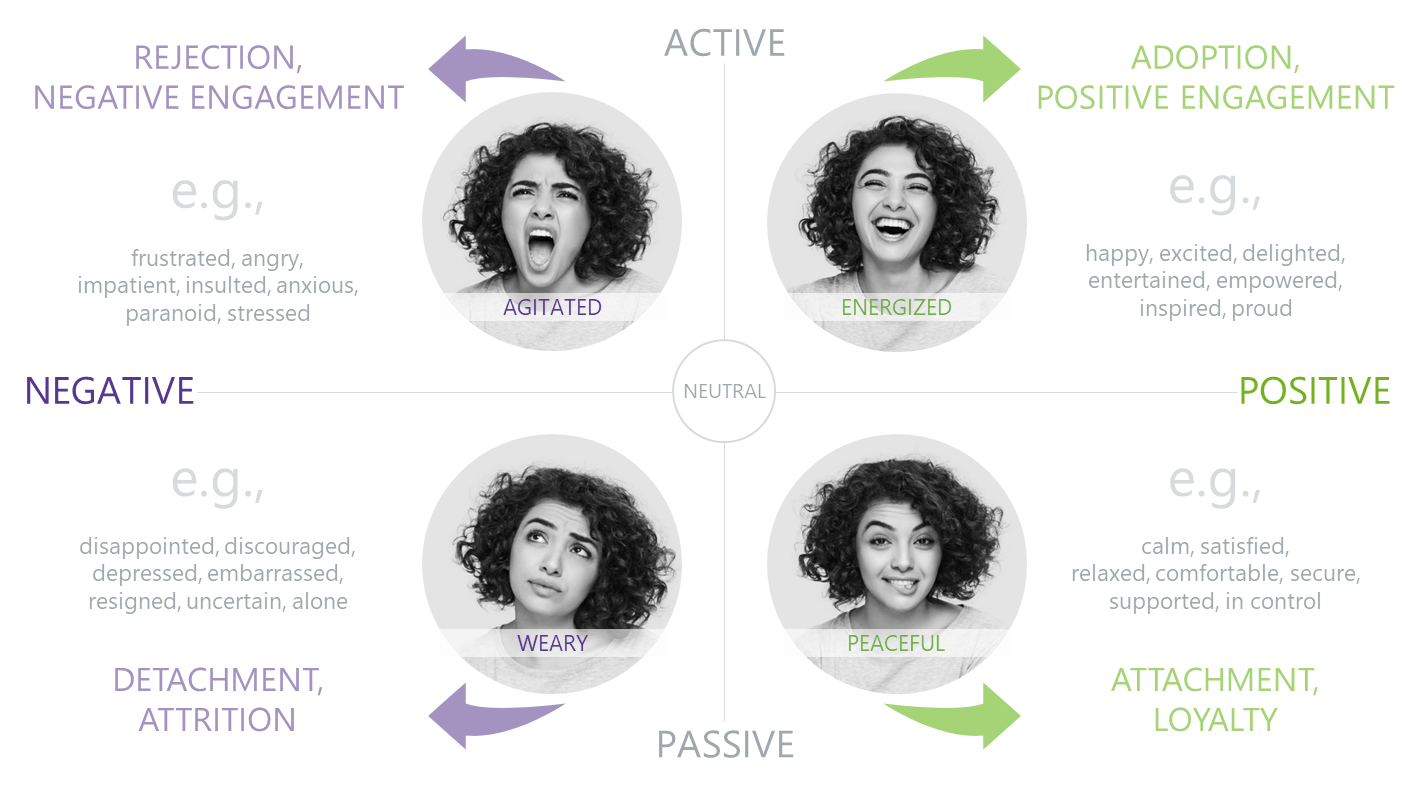About a 2 min. read
Generative AI is crossing a similar perilous chasm as many disruptive technologies before it: lots of press, public discussion, and high expectations, followed by a backlash (where we are now). How can companies offering or leveraging AI products into their operations or products navigate these choppy waters? This can be best addressed by understanding people’s emotional journey through these changes.
While CMB hasn’t seen this exact movie before, we have over 30 years’ experience developing tools to help companies with this process. Emotions are central to the success or failure of disruptive technologies, and emotions can differ dramatically across segments. Early adopters of tech generally have more high-activation positive emotions and fewer high-activation negative emotions towards new disruptive technologies. By contrast, mainstream and late adopters are more likely to have negative emotions. Our models have shown repeatedly that high-activation emotions, like anxiety/fear, are the biggest predictors of whether someone will embrace a new technology or reject it.

CMB’s Autonomous Vehicles (AVs) emotion-driven research (which relies heavily on AI) provides guidance for any company offering products based on Generative AI. The backlash towards AVs was driven—in part—by people’s anxiety around the concept. By comparison, most people had strong emotions of feeling in control, secure, protected, and efficient when driving their own car. Bridging this gap (e.g., by giving people reasons to believe they are secure in AVs and are—ultimately—in control of them even though they run autonomously) is key for adoption among mainstream and late-adopter segments.
CMB’s emotional framework statistically links specific emotions to messaging, creative executions, and/or product features. In the case of AVs, messaging around safety had the greatest impact on KPIs like consideration, and in alleviating anxiety and hesitancy.
Similar research CMB did on Virtual Assistants (e.g., Siri, Alexa, etc.) revealed similar dynamics, albeit with lower stakes. Minimizing emotions related to “paranoia” or “being creeped out” (by a virtual assistant constantly listening in on you and learning from its interactions with you to evolve) was a significant driver of acceptance vs. rejection of the category, and specific brands/products within it.
Generative AI finds itself in similar terrain, where building consumer trust will be paramount for success. Build trust by showing why your company and/or product is reliable and trustworthy with their data (i.e., security and privacy, transparency, etc.). Doing so is key to minimizing anxiety and hesitancy, and activating positive emotions around feeling efficient, smart, and in control.